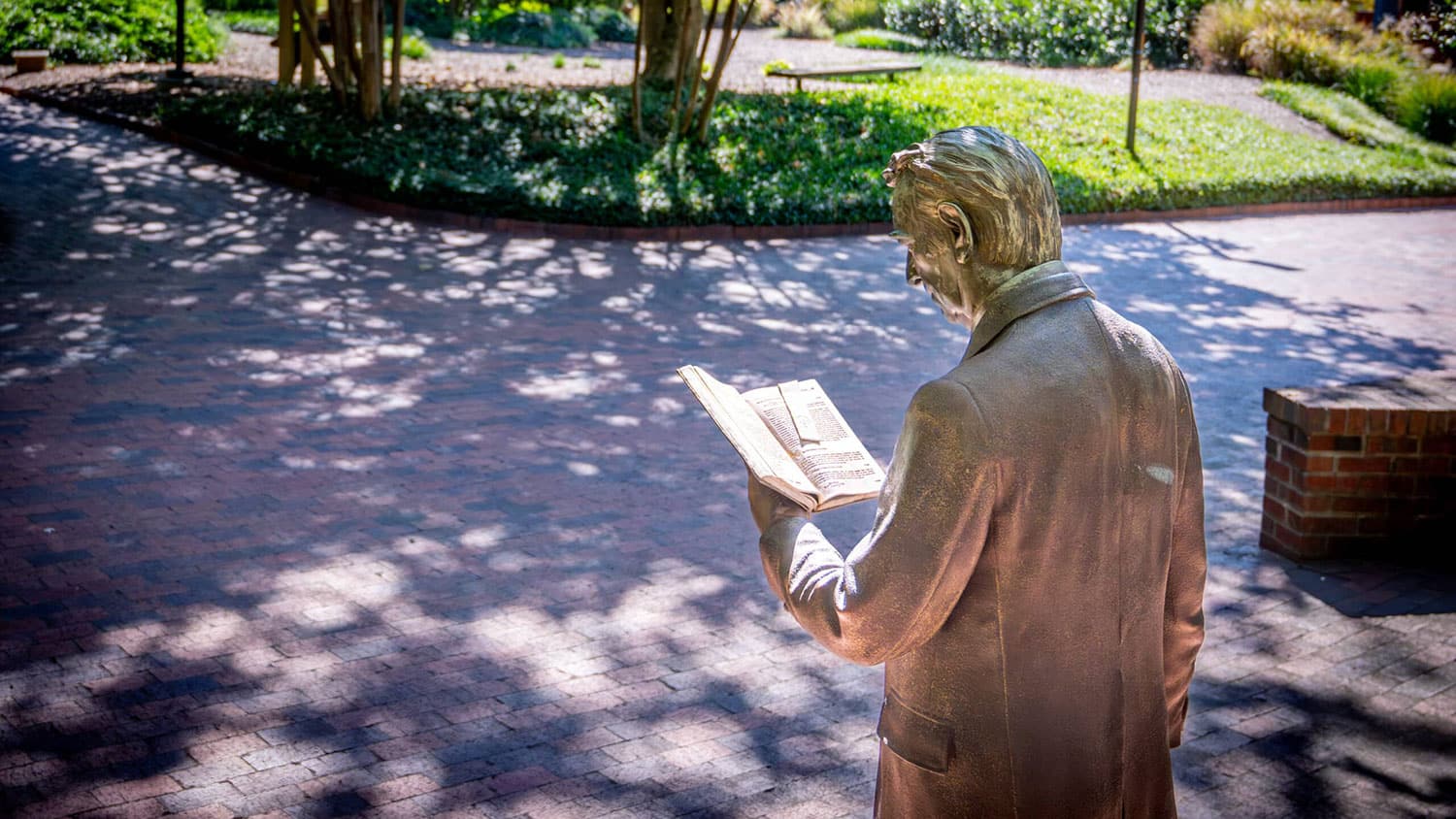Carillon Played First Time Since 1989
Chris Gould made musical history at the Memorial Belltower this week.
Gould, the associate dean for administration in the College of Physical and Mathematical Sciences, sat at a keyboard in small room in the basement of Holladay Hall on Monday afternoon and played NC State’s alma mater.
And the music poured out of the Belltower, for the first time since 1989.

“It was amazing,” says Thomas H. Stafford Jr., vice chancellor for student affairs, who was on hand for what he described as a historic occasion.
“It’s been over 20 years. Just to hear it again almost gave me goose bumps. It really did sound good.”
What had Stafford and Gould so excited (“Dr. Gould was beside himself,” Stafford says.) is that the Belltower’s 246-bell grand symphony carillon worked for the first time in more than two decades.

No, that doesn’t mean there are now actual bells in the Belltower. But the university’s carillon, which has been broken since 1989, can now transmit songs played on a keyboard to create the sounds of bells that are then amplified through speakers inside the Belltower.
“It’s amazing that it works this well,” says Gould. “If you look inside, it’s a mechanical marvel. That was my happy moment, to play the alma mater on the carillon.”
The magical moment was set in motion recently when Gould, an accomplished pianist, was talking with Stafford about tours that Stafford periodically gives of the Belltower. Stafford mentioned that the carillon in the basement of Holladay Hall was a popular stop on the tour, but that the carillon had not worked for years.
Stafford says students and others used to play the carillon every day at 5 p.m. They would typically play four to six songs, often ending with the alma mater. Handwritten logbooks from 1970-1989 show that religious songs such as “Amazing Grace” were played regularly, but that students also played songs that were popular at the time.

Stafford says it’s a bit of mystery about what happened to cause the practice to stop in 1989. But he says the carillon had not worked for years until Gould started poking around.
Gould and others in the physics department took a look at the carillon, but could not figure out how to make it work. “It’s a very beautiful piece of equipment,” Gould says. “It’s really a work of art.”
Workers at the university’s Physical Plant got involved, and consulted with representatives of the carillon’s manufacturer and a company consultant. When Stafford, Gould and others checked in on Monday afternoon, the carillon was working again. Stafford says university officials once thought it might cost $10,000 or more to fix the carillon, but that it was apparently done at no cost.
When Gould first played the keyboard, he couldn’t tell if the sound was coming out of the Belltower. It was, although the momentous occasion may have been lost on some people who have been accustomed to hearing the chimes that ring from the Belltower.
“It seems people weren’t aware that this was an unusual event,” Gould says.

The sound system for the Belltower is actually three separate systems, Gould says. The automated chimes, which have worked for years, constitute one system. The carillon, played from a keyboard, is the second system. The third system allows the carillon to be played from a cassette tape and is either broken or obsolete, he says.
But Gould is excited to think that the carillon could be played for this December’s graduation. Stafford says his next challenge is to figure out a system for when and how to play the carillon.
“Are we going to find someone to come in every day and play it and are we going to have special occasions where we play music?” Stafford says. “The next step is to figure out how we move forward.”
- Categories:


